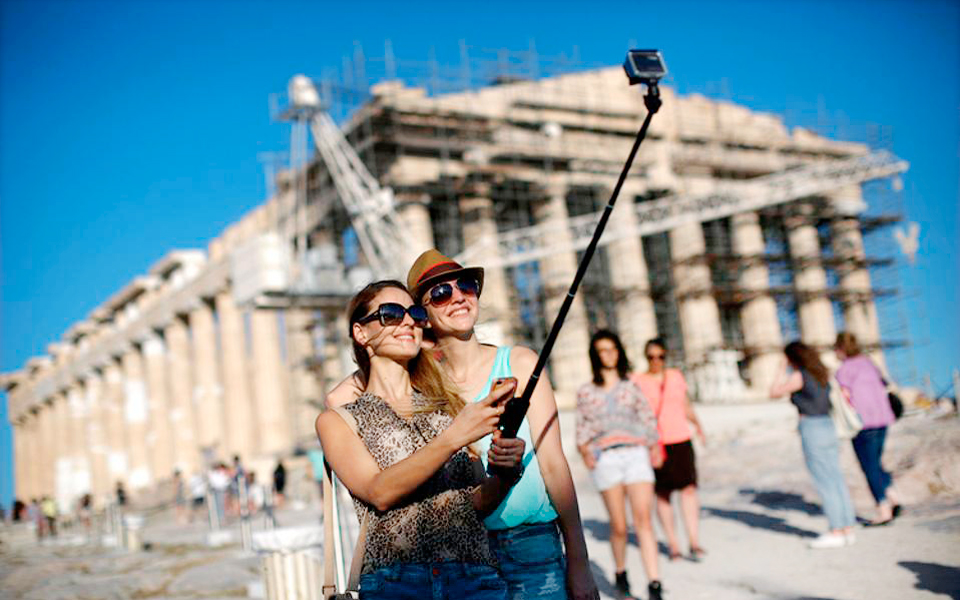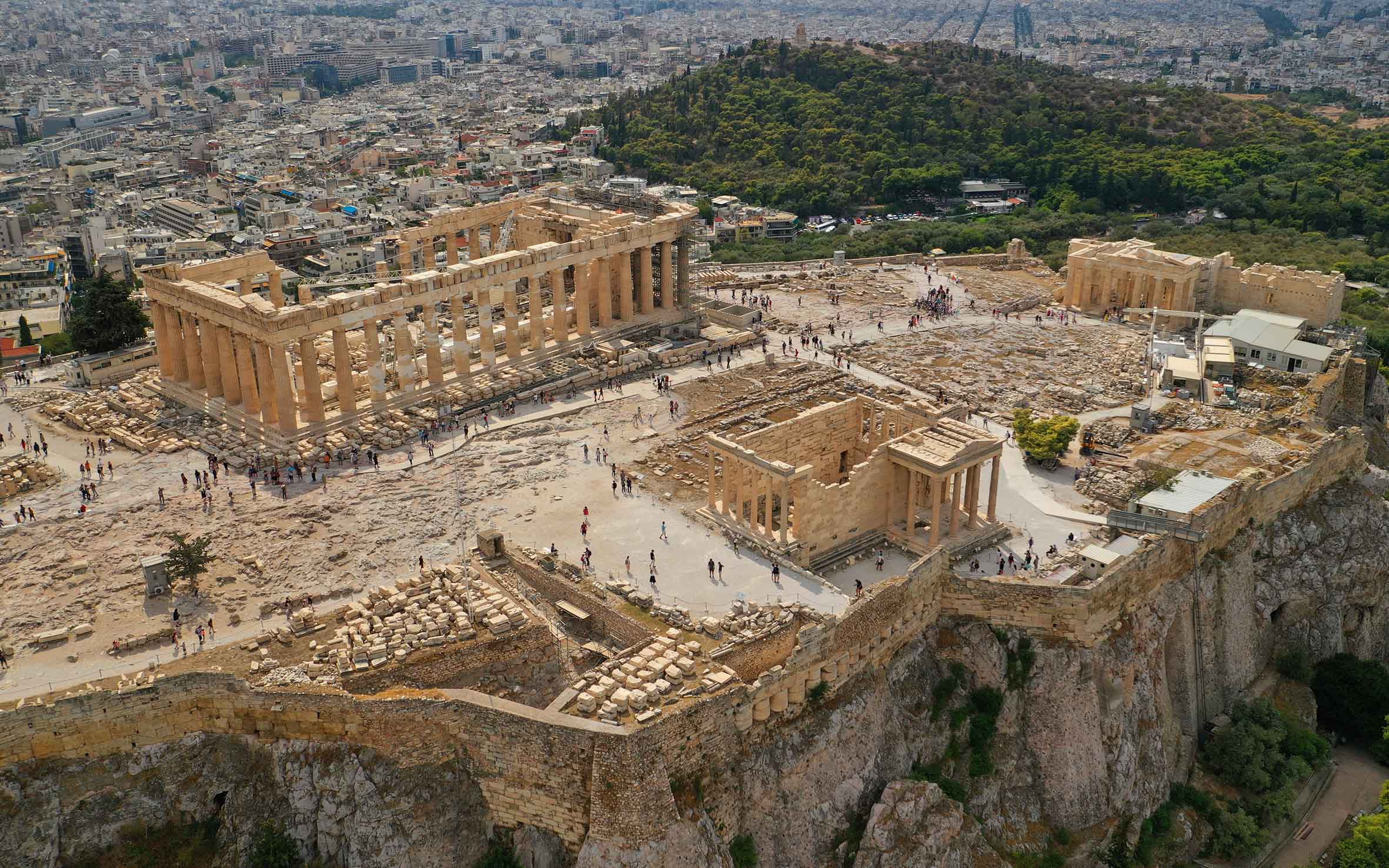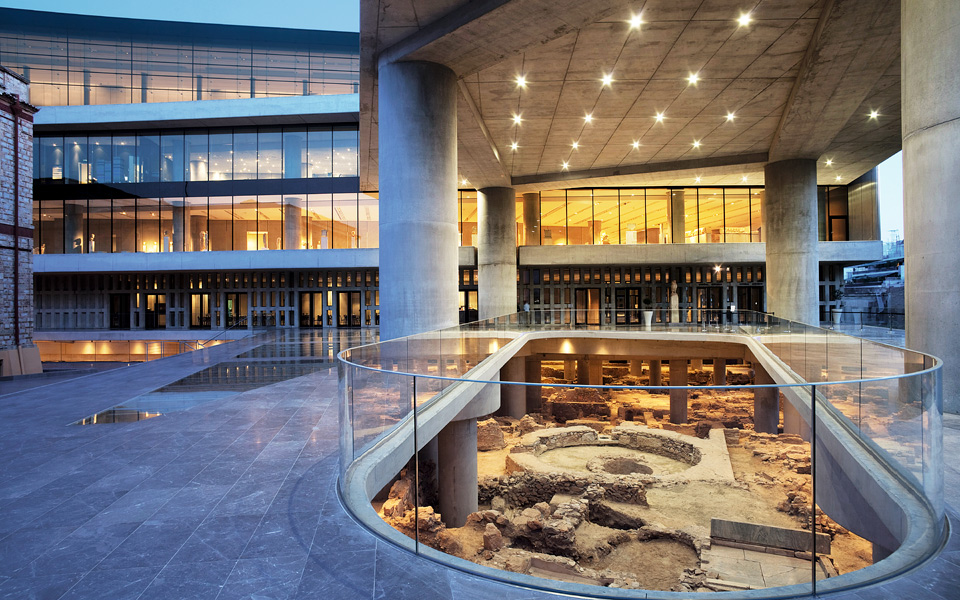It’s one of the most famous landmarks in the world; towering over the Greek capital, wearing the Parthenon like a crown, and bathing in light at night, it’s a sight as impressive in real life as it is on postcards, in the movies, in fashion shoots, and in your dreams. While it’s actually not, as many believe, the highest point in the city (Mount Lycabettus is), the Acropolis of Athens certainly sits at the top of many travelers’ bucket lists.
Below is all the basic information you need to plan your visit.
Where is the Acropolis
Situated in central Athens, you can see the hill from almost every open space in the city. Find an one and look up; there’s the direction you should be heading in.
While visible from afar in every direction, the fortified hill is only accessible from the west. There are two entrances to the slopes, however, situated near beginning and end of Dionysiou Areopagitou pedestrian street, running along the south side of the slope. The main entrance is near Filopappou Hill, while the smaller entrance, near the theater of Dionysus, is in the Makrigianni neighborhood (between Koukaki and Plaka).
To get here by public transport, the “Acropolis” metro station and the “Makrigianni” bus stop are only a short walk away from the smaller entrance.
Ticket information & Opening Hours
The Acropolis is open from 08:00 until 17:30 in the winter (typically November 1st-March 31st), and 08:00 until 20:00 in the summer (typically April 1st-October 31st). Visitors may enter the site up until 30 minutes before closing. Beware that you may be asked to choose a time slot for your visit when you book your tickets, but this information is only collected for statistical purposes; you are under no limitation concerning the exact time of the visit or how long you wish to stay.
Entrance tickets to the Acropolis, which include access to the sights on the slopes of the hill, can be purchased from multiple independent providers and via the government’s official e-ticket website (here), as well as at the ticket booths on site.
The full ticket price is €20 from April 1st through October 31st, and €10 from November 1st through March 30th.
Many people qualify for a reduced ticket price or free entry year-round. Granted you can show identification and the right documentation if relevant, free admission is granted to, among others:
- People from EU-member states up to the age of 25, and kids from non-EU countries up to the age of 5
- Students over 25 in secondary education EU member-states and countries of the European Economic Area
- Teachers escorting students from EU member-states and countries of the European Economic Area
- People entitled to Social Solidarity Income
- People with disabilities (at least 80%) and their escorts
- Refugees
- Journalists
And a reduced ticket price (€10) is granted year-round to:
- People between the ages of 6 and 25, from non-European Union countries
- Senior citizens over 65 from EU member-states and the European Economic Area
- Parents accompanying primary education schools visits from EU member-states and the European Economic Area
- Teachers accompanying pupils from non-European Union countries
In addition, free admission is granted to all visitors on these dates:
- March 6
- April 18
- May 18
- The last weekend of September
- October 28
- Every first Sunday from November 1st to March 31st
You can find more detailed information and the complete list of who is offered free or reduced admission here.
There is also a special ticket package which costs €30, is valid for 5 days and, besides the Acropolis, also grants visitors entry to: the ancient Agora of Athens, the ancient Agora of Athens Museum, the Archaeological Museum of Kerameikos, Hadrian’s Library, Kerameikos, the Lyceion Archaeological Site, the Olympeion, and the Roman Agora of Athens.

Wheelchair Accessibility
The Acropolis of Athens is partially accessible, thanks to the renovation of a path and the installation of a new lift last year. There are also two electric cars available for people with disabilities at the top of the hill.
While not all areas are accessible for you who are wheelchair-bound or suffer from reduced mobility, it is possible for you to see most of the famous landmarks up close.
Find a map of the site indicating the new paths (the dotted line) here.
Additionally, in a new initiative, an Athens tour company is offering visits to the Acropolis designed especially for the visually impaired. You can read more about that here and book the tour here.
For information about using the lift and the electric cars, call (+30) 210.321.4172 or (+30) 210.923.8470). Beware that the lift is located ca 350 meters from the main entrance, and that it does not operate during extreme weather conditions.

© Shutterstock
Visiting with kids
Many kids enjoy the history and mythology connected to the Acropolis. If you are visiting with young children in the summer, remember to protect yourselves from the sun and drink lots of water, as it’s usually hot at the top, and you need to climb plenty of steps to get there. Also beware that many spots on the rock are slippery, so parents of toddlers need to be careful.
Parents visiting with two or more infants on their own may use the lift, located ca 350 meters from the main entrance, to reach the top of the hill. The site is not stroller-friendly, however parents may check strollers their in for free at the main entrance.
Guided tours
Almost every tour company in Athens (and there are plenty) provide tours of the Acropolis with a licensed guide. In addition, thanks to the thematic tour trend, you can book a tour that combines a guided visit to the Acropolis with another activity, whether you’d like to pair it with a wine tasting afterwards, a treasure hunt, or a cooking class. There are also audio tours available, which you can read more about here.
You can find every Acropolis tour listed on Tripadvisor here.
Covid 19
Following is the official statement from the Ministry of Culture and Sports regarding visiting the Acropolis Hill during the Covid 19 pandemic:
“According to new Government measures for COVID-19, the visitors of the archaeological sites should keep the following instructions: 1) They should maintain at least 1.5 m distance among them. 2) One person per 10 square meters. 3) The maximum number of visitors group is up to 20 persons, unless they belong to the same family or up to 40 persons if their guide as well as the guided group have vaccination certification or a negative PCR test (last 72 hours) or a negative rapid test (last 48 hours) or a certificate that they have been infected and recovered by COVID during the last 30 days. The above-mentioned categories refer to adults 12 years old and above. 4) The use of a mask is obligatory inside the museums and in the overcrowded archaeological sites. 5) From Friday 28th of May 2021 and now on, the visitors of the Site will not be able to visit Acropolis North Slope (Peripatos) due to work in progress. People with Special Needs will be allowed to use this path, in order to approach the specially designed elevator going up the Acropolis Hill with the aid of the guard staff.”
Source: odysseus.culture.gr

© Nikos Daniilidis
The Acropolis Museum
You don’t have to pair your visit to the hill with one to the Acropolis Museum, but it’s a shame not to.
Created by Swiss architect Bernard Tschumi and inaugurated in 2009, the building is designed to cleverly and subtly echo the structure of the hill, with its inclined Acropolis Slopes Gallery and the Parthenon Gallery which resembles the temple itself in its dimensions, where the sculptures are placed around what would be the walls of the Parthenon – just as they were originally placed. Through the glass walls of the galleries, you look straight up at the citadel.
For the museum’s opening hours, go here. For ticket information, go here.
Read more
These selected articles on our website provide basic insight and interesting details that are nice to know before your visit:
Must-See Archaeological Sites in Athens
The Parthenon Marbles, In Depth, Part 1
The Optical Illusions That Make the Parthenon Perfect
The Strange Artifacts Hidden Inside the Parthenon’s Walls
And for your visit to the Acropolis Museum:












